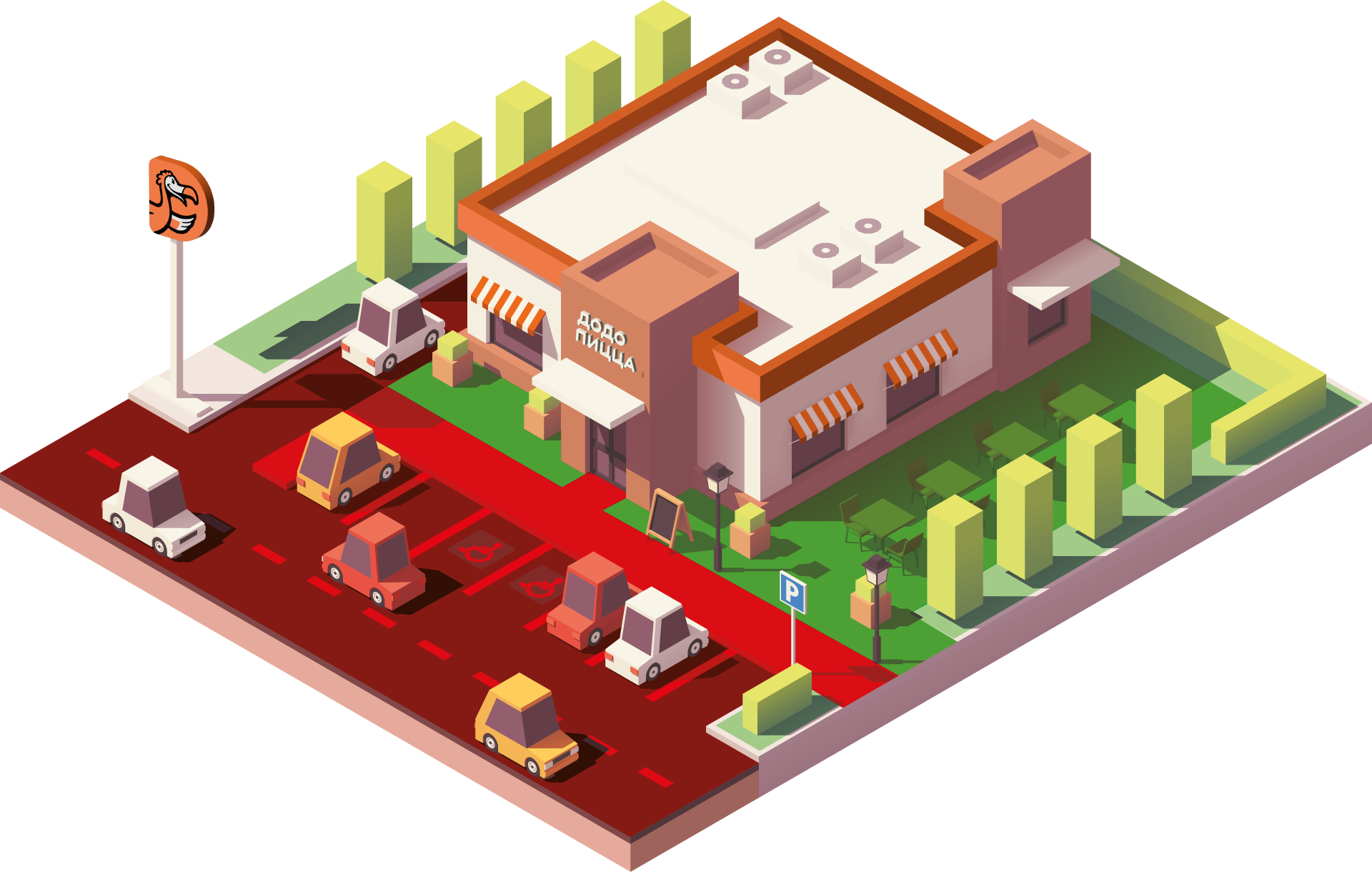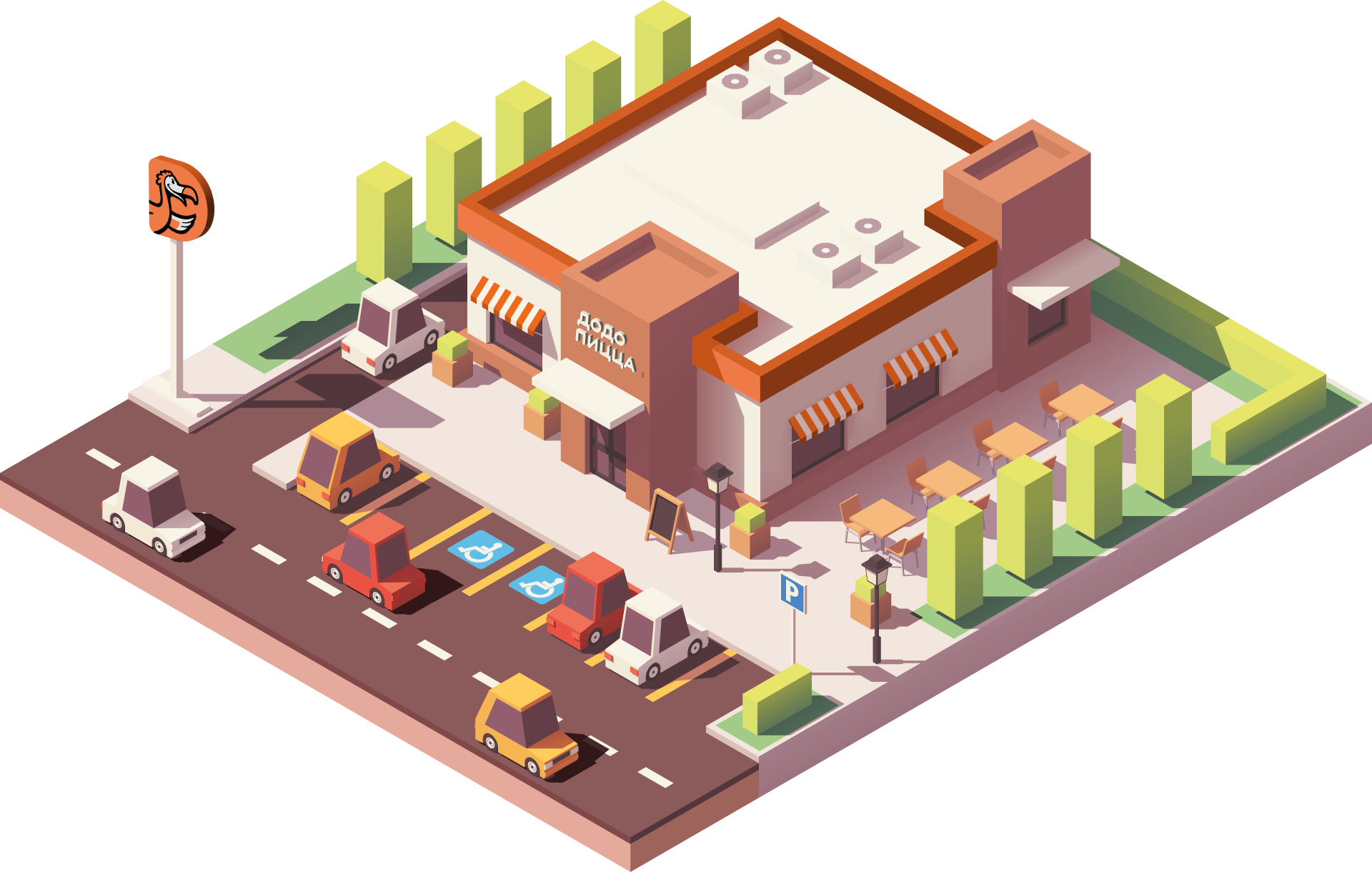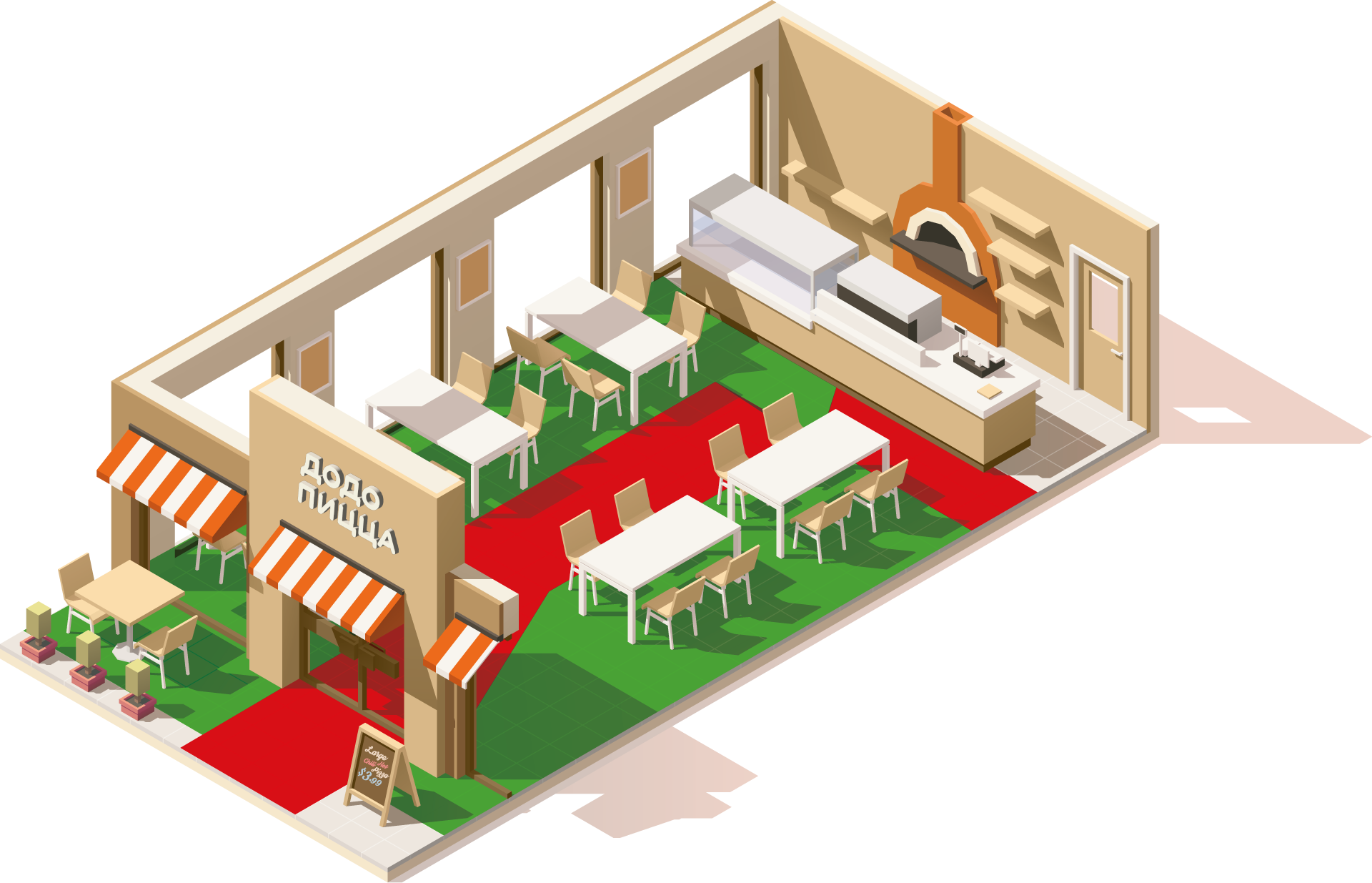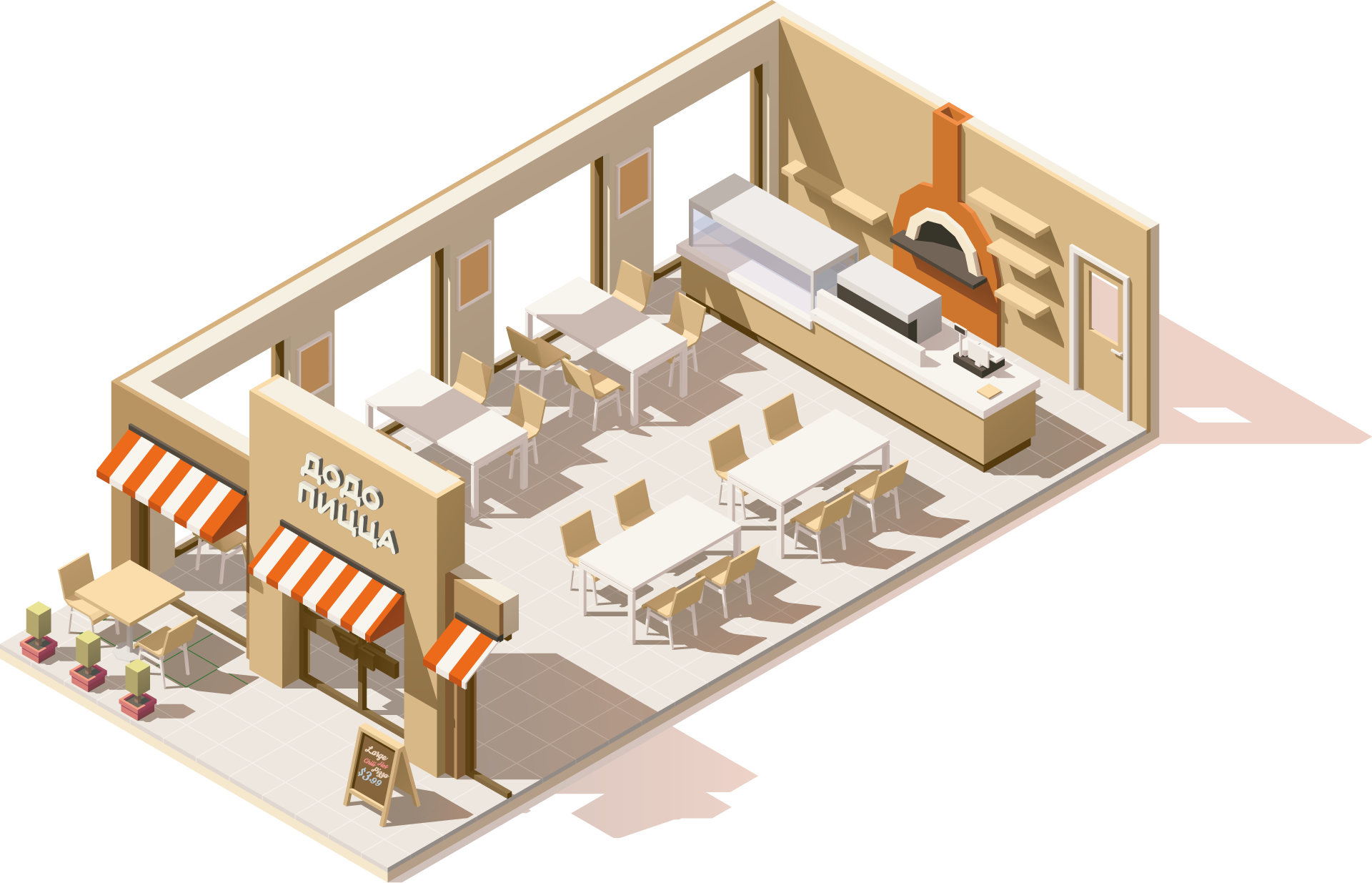Information for the visitors’ flow in restaurants. Fast and slow zones
When people approach a restaurant and find themselves inside, they have different amounts of time to interact with information. They may have little time and have to hurry, and they can have a lot of time and explore the information without any rush. The concept of fast and slow flow zones will help you take this factor into account and distribute information across the media correctly.
Fast zones are areas where people have little time to contact with the information. People have to be careful in the fast zone: you can bump into someone there, it's not safe, you can't relax, you have to look around. The sidewalk on a busy street, the space right in front of the entrance into the building, the walkway between tables in a restaurant are fast zones.
Slow zones are the opposite: these are areas where a person has a lot of time to make contact with information. The customer feels safe there, since they are not in the middle of the walkway. People in the slow zone stop minding the objects around them, they are more relaxed, and can read small texts or flip through a feed on their smartphone. A seat at a distance from the door, a table in a restaurant are slow zones.


People don't tend to get bogged down in information when they are on a road, on a sidewalk, close to a restaurant door. They are constantly monitoring the situation around them in places like these.
It's easier for people to see more information when they're sitting at a table or away from the door.


People have to monitor the situation at the door and on the passages at all times. They have less time to make contact with information in these areas. Some people find it difficult to sustain the moment of choice at the cash desk, so we consider the area in front of it a fast zone.
If a person is sitting at a table, they have more time to make contact with information.
Place only the most essential and basic information in the fast zones. Put all complex information in the slow zones.
Don't expect that a person will thoughtfully study the restaurant menu and all the promotional offers in the fast zones. It’s not a good idea to hang menus on the door. A customer is hardly ever able to stand at the cash desk with a line of 20 people behind them and say, "Tell me all about your promotional offers, I want to choose really carefully". We admire the ability of those who can withstand such social pressure.
Menus aren’t usually hung on the door, rather than next to it, a little to the side, if the adjacent wall allows. You can stand there for five minutes without fear of being bumped into. If you need someone to read about the offers inside the restaurant, you should either send them to the table or take them to the self-checkout terminals area to get them out of the pressure of the cashier and the queue.
All you can count on in a fast zone (e.g., on the road) is that a customer will see and recognize the entrance, or the "We have new berry milkshakes, come on in" ad. In fast zones, people have little attention span and little time to absorb information. The consciousness of people in fast zones is preoccupied with survival: you have to watch the space around you, and be able to dodge pedestrians crashing into you, cars, birds and dogs, couriers on scooters and other people's children.
Place little bits of information in the fast zones, and all the rest in the slow zones.
Read next:
